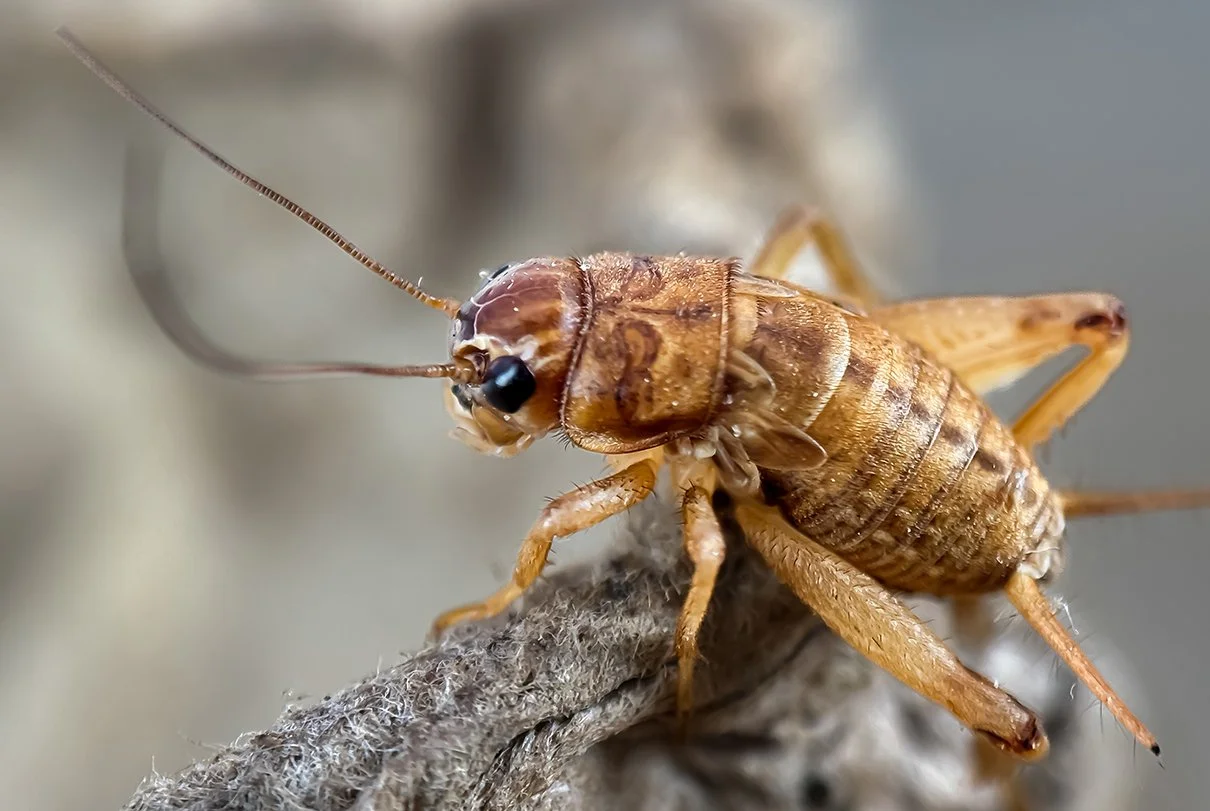Crickets
Crickets are a common nuisance pest in Southern California and are especially active during warm months. These insects are nocturnal, meaning they are most active at night, when their distinctive chirping sound becomes most noticeable, and often annoying. While many people associate crickets with good luck, an indoor infestation can result in property damage, food contamination, and sleepless nights. During the day, crickets hide in dark, warm, and damp environments such as under landscaping, in mulch beds, around sprinkler boxes, or in crawl spaces. As temperatures drop, they often migrate indoors seeking warmth and shelter.



Cricket Biology & Behavior
Understanding a cricket’s habits helps in preventing infestations. These insects are omnivorous scavengers and quick breeders, making early control essential.
-
Diet – Outdoors, crickets feed on plants, fungi, and insects. Indoors, they consume fabrics, paper, glue, and even pet food.
Breeding – Female crickets lay eggs in moist soil or within cracks and crevices. They thrive in quiet, undisturbed areas.
Types in SoCal – The most common species in Southern California are the Field Cricket and House Cricket, both known for indoor activity and nighttime noise.
Why Crickets Are a Problem
Crickets may seem harmless, but their presence indoors can lead to property damage, contamination, and sleepless nights. These pests become especially troublesome when they move indoors in search of warmth and food.
-
Fabric Damage – Crickets feed on natural and synthetic fabrics like cotton, silk, and wool, often leaving holes and chewed patches behind.
Contamination – Their droppings can soil surfaces, food, and stored belongings.
Attract Predators – Their presence can lure in spiders, rodents, and other unwanted pests.
Structural Intrusion – During cooler weather, they invade garages, basements, laundry rooms, and furnace areas, sometimes in large numbers.
Constant Noise – Male crickets produce a high-pitched chirping sound at night to attract mates which is annoying and disruptive, especially indoors.
Signs of a Cricket Infestation
Cricket issues can begin subtly but escalate rapidly if not addressed. Spotting early signs can help prevent a larger infestation.
-
Persistent chirping, especially at night – Male crickets produce loud, repetitive sounds to attract mates, often disrupting sleep.
Chewed edges on books, wallpaper, cardboard, and clothing – Crickets feed on a variety of paper-based and fabric materials indoors.
Increased activity near moisture – Crickets are drawn to humid environments such as laundry rooms, crawl spaces, basements, and kitchens.


